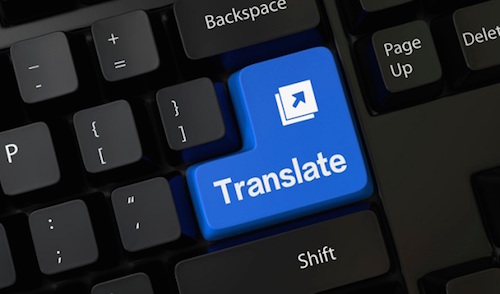Artificial Intelligence is yet to gain ground when it comes to understanding, reproducing and translating full-length sentences of any given language. University of Liverpool researchers are adding their own AI techniques that could help the computer to understand a language and accurately build complete sentences. The researchers believe that adding the human-like ability to computers while translating words and languages are key to improving accuracy.
Pretty much like humans, when the computer confronts a word it does not understand or recognise, the algorithms search for the word in the dictionary and try to guess the other words that should appear with this unknown word in the text. This provides the computer a semantic representation of the word that is both consistent with the dictionary as well as with the context that appears in textual form. Thus the computer will be able to build up proper sentences by adding meaningful words around the unknown word.

The algorithm’s ability to help computers understand words is pretty much like ‘teaching language to computers,’ stated Liverpool scientist Danushka Bollegala.
It’s possible to get a high-accuracy translation from online tools like Google Translate, but the sentence structures many times are poor, and the meanings are misconstrued. This new technology is a step ahead towards building an accurate universal translator. Not only can it remove language barriers, but even translate entire books and make web searches across the globe easier.
Multiple attempts at universal translators are already in work. Microsoft, Apple, Amazon etc have voice-activated assistants that can answer your basic questions. Microsoft’s Skype Translator employs machine learning to make real-time translation during voice-chats possible.
The U-STAR (Universal Speech Translator Advanced Research) program has 33 universities and organizations across the globe participating in it, and the U.S. Department of Defense’s DARPA is also looking to venture into develop translators with machine-learning to basically help the military interact with locals on foreign soil.
The research was recently showcased at the Association for Advancement of Artificial Intelligence Conference in Arizona, US.
Artificial Intelligence is yet to gain ground when it comes to understanding, reproducing and translating full-length sentences of any given language. University of Liverpool researchers are adding their own AI techniques that could help the computer to understand a language and accurately build complete sentences. The researchers believe that adding the human-like ability to computers while translating words and languages are key to improving accuracy.
Pretty much like humans, when the computer confronts a word it does not understand or recognise, the algorithms search for the word in the dictionary and try to guess the other words that should appear with this unknown word in the text. This provides the computer a semantic representation of the word that is both consistent with the dictionary as well as with the context that appears in textual form. Thus the computer will be able to build up proper sentences by adding meaningful words around the unknown word.
The algorithm’s ability to help computers understand words is pretty much like ‘teaching language to computers,’ stated Liverpool scientist Danushka Bollegala.
It’s possible to get a high-accuracy translation from online tools like Google Translate, but the sentence structures many times are poor, and the meanings are misconstrued. This new technology is a step ahead towards building an accurate universal translator. Not only can it remove language barriers, but even translate entire books and make web searches across the globe easier.
Multiple attempts at universal translators are already in work. Microsoft, Apple, Amazon etc have voice-activated assistants that can answer your basic questions. Microsoft’s Skype Translator employs machine learning to make real-time translation during voice-chats possible.
The U-STAR (Universal Speech Translator Advanced Research) program has 33 universities and organizations across the globe participating in it, and the U.S. Department of Defense’s DARPA is also looking to venture into develop translators with machine-learning to basically help the military interact with locals on foreign soil.
The research was recently showcased at the Association for Advancement of Artificial Intelligence Conference in Arizona, US.